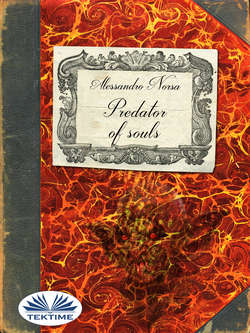Читать книгу Predator Of Souls - Alessandro Norsa - Страница 8
THE MANY VAMPIRE ROOTS ALL OVER EUROPE, IN PARTICULAR IN THE BALKAN COUNTRIES
ОглавлениеThe legendary and mythological tradition of vampires, disturbing figures, is rich: beyond the Greek and Roman worlds which have conditioned all western culture, they are present also in Arab, Indian, Chinese and Japanese legends.
In some traditions handed down over time, the vampire is a dead person in flesh and bones who appears to the living in his body and feeds on their blood; in other legends vampires are also the mythological and fiendish spirits that attack the living - and sometimes eat them, or feed on their blood - but that have never been human. In the first case, we will have, for example, that which for Greeks and Romans was called strix (from which the Italian term âstregaâ [witch in English] is derived) which was not a human person, but a nocturnal demon which came out of the tomb, and was feared because considered capable of attacking babies and feeding on their blood. In the second case, the vampire was a dead human person, a living thing that drank blood, it was a particularly malevolent and blood-thirsty witch. In the third case, vampires are dead human beings who appear in their bodies, which assume a physical and tangible reality and are not a simple image or illusion. It is the image that we have of the classic vampire that comes out of the tomb in its body and which you can not only see, but also touch: or rather, it is very resistant and must be destroyed with drastic measures. We maintain that it is not possible to understand the true nature of this being if we do not fall into that type of thinking âof the originsâ that characterised men in the Neolithic period: a world where everything was pervaded by the divine: places, objects, animals, food, rivers, trees and lightning. The divine, under this logic, was not found in an unattainable sky, but here on earth, the place of burial and therefore the home of our ancestors who become in their turn divinities. Starting from these assumptions, there was research for a dimension in which to find an explanation for calamitous events otherwise inexplicable. In an animist logic, therefore, the weakness of the body, not being able to be understood by the medical knowledge which we have today, became the effect of fearful malevolent beings, but not only, they could be the effects also of nightmares, the death of foetuses, convulsions, hysterical crises, depression, distrust, illnesses, pains all over the body, death by suffocation and above all chest tightness with sensations of lack of breath. To be able to carry out so many wicked deeds these entities possessed enormous physical strength and incredible speed of movement, they could hypnotise with their stare and transform themselves into disturbing animals. We will see later the various elements making up the image of vampires which has been traditionally handed down, just like it has been consolidated in nineteenth century literature and in cinema, retracing the origins among the folds of the popular myths and legends. Starting from a reading of the legendary Romanian figures that can be associated with vampires, we will extend our investigation to analogous entities that are found in Eastern Europe. We will then analyse the origins of the myth of Dracula in the myths and symbolic aspects of the animist culture, studying in depth, therefore, the theme of the capacity to transform oneself into a bat and to fly during the night, of the proofs of meetings with the vampire, seducer of young girls, and, finally, of exorcisms as we will see better in the paragraph dedicated to these aspects.
